Maltodextrin is a form of carbohydrate used extensively in TORQ products – in this article we explain what it is, the significant performance benefits it offers and dispel any myths surrounding this often misunderstood functional food ingredient.
Maltodextrin is a source of carbohydrate derived from botanical sources, most typically from the corn or wheat crop, however it can also be produced from rice and potato. Just like any other carbohydrate, maltodextrin has an energy density of 4kcals per gram and so it is considered a fantastic source of carbohydrate, perfect for when your exercise intensity and duration necessitates the need to fuel.
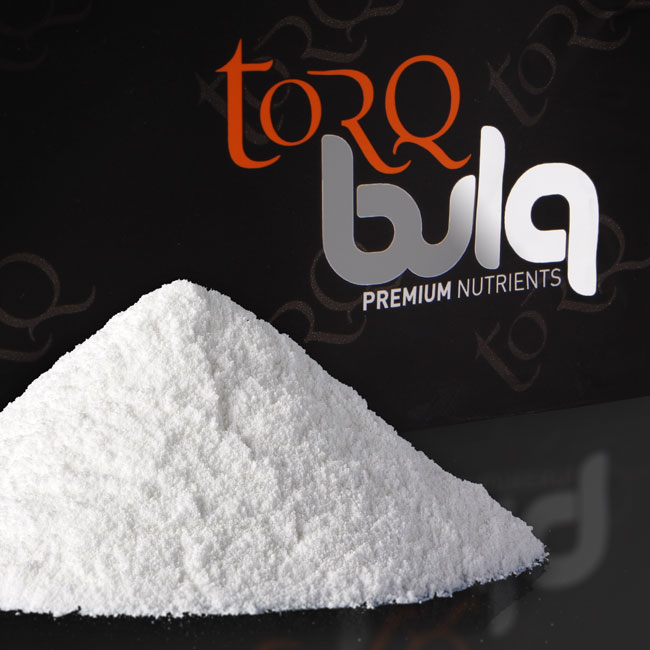
Carbohydrates can be broken down into sugars and starches and it is the length of the chemical structure that determines which camp the carbohydrate falls within. For example, glucose would consist of a single sugar molecule known as a monosaccharide. Other monosaccharides include fructose and galactose. Sucrose (the scientific name for table sugar) is known as a disaccharide and would consist of a glucose and fructose molecule joined together by a bond. Other disaccharides include maltose, and lactose (see the image below). As all of the examples provided above have a chemical structure less than 3 molecules long, they would be considered as sugars or simple carbohydrates.
Maltodextrin on the other hand is considered a starch based upon its molecular structure of multiple glucose molecules joined together. Maltodextrin has a mostly linear structure, with a few small branches extending outwards from the chain. The image below taken form Jeukendrup and Jentjens (2000) accurately showcases the molecular structure of different forms of carbohydrate.
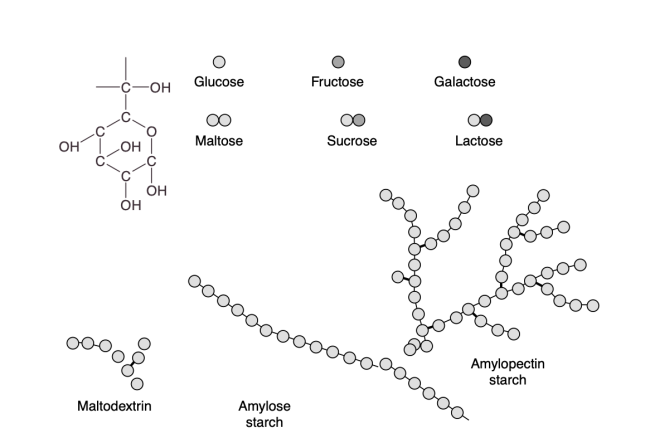
Other forms of starch that you would encounter on a day-to-day basis include foods like potatoes, pasta and rice. These are carbohydrate-rich foods, but the simple sugar molecules are joined together in a chain just like maltodextrin. Interestingly, the more sugar molecules there are in the chain, the less sweet the resulting carbohydrate becomes and as we discuss later, this is one of the numerous advantages maltodextrin has over simple sugars when used within a performance nutrition product.
Osmolality & Glycaemic Index
Unlike simple carbohydrates like glucose and fructose, maltodextrin has a very low osmolality due to its more complex molecular structure. Osmolality is the technical term used to describe the number of solutes within a solution and is measured in osmols per kilogram of solution. In the case of a performance drink like TORQ Energy Drink for instance, the solute is the carbohydrate and electrolytes that have been dissolved within the water. The more solutes that are dissolved into the water, the higher the osmolality of the drink. Maltodextrin has the advantage of carrying multiple glucose molecules per maltodextrin molecule, so it’s rather like a Trojan Horse – the body sees one molecule, but that molecule is actually encapsulating many more. It’s easy therefore to see how a drink containing maltodextrin has very low osmolality compared to one of the same carbohydrate concentration that uses simple sugars. Interestingly, there are also different grades of maltodextrin available with glucose chain lengths varying between 3 and 20 in number. TORQ use high-specification maltodextrins with a DE (dextrose equivalence) of 20. The higher the DE, the more soluble and more easily the bonds joining the glucose molecules together can be broken down (20 is at the top end of the DE scale for maltodextrin).
There is a direct relationship between the rate of gastric emptying (stomach emptying) and osmolality. The lower the osmolality, the quicker the gastric emptying. The quicker the gastric emptying, the less stomach discomfort and the faster the carbohydrate gets to the site of absorption into the blood (the small intestine).
It is its lower osmolality that gives maltodextrin an extremely high glycaemic index (GI) – the highest of any carbohydrate available. For those of you who are new to the term glycemic index, it is simply a value assigned to a carbohydrate that highlights the speed at which it becomes present in the blood after being consumed/eaten. The higher the value, the faster it appears in the blood. The Glycemic Index of maltodextrin (110) exceeds that of glucose (100) and this isn’t because it’s absorbed any more quickly, it’s because it gets to the site of absorption more rapidly after ingestion. This is an essential quality for a Performance Nutrition product, because speed of absorption is absolutely critical – the sooner the carbohydrate can arrive in blood, the sooner it can be distributed to the muscles for fuel.
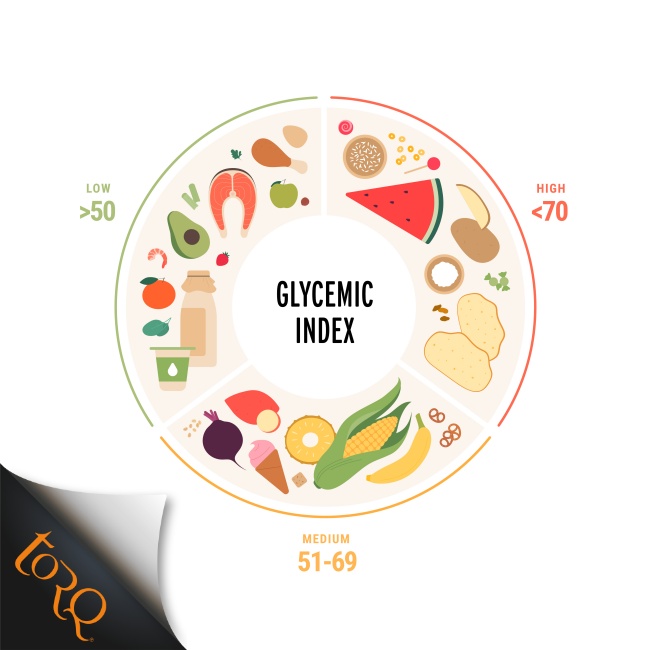
If you would like to learn more about osmolality in particular, please take the time to read our article Isotonic, Hypotonic or Hypertonic.
Absorption & Oxidation Rates
There is a significant amount of research available demonstrating that when maltodextrin is ingested/consumed at a rate equal to 1g/min (60g per hour), the same amount of carbohydrate is oxidised and burnt by the muscles. However, no matter how quickly maltodextrin is emptied from the stomach, the rate limiting factor of absorption occurs in the small intestine. As maltodextrin uses the same intestinal transporter as glucose (SGLT-1), the absorption saturation threshold remains the same between glucose and maltodextrin at 60g per hour.
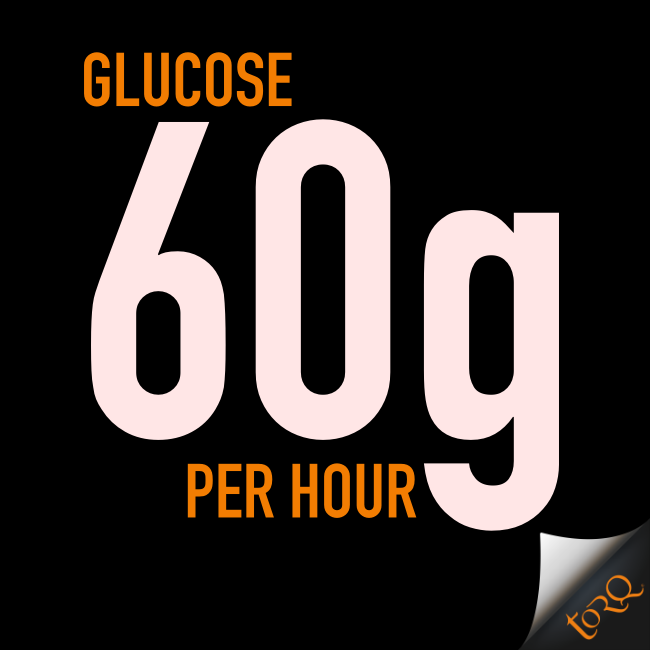
Fructose (a simple sugar) one the other hand is transported into the blood by a different intestinal transporter GLUT-5 which becomes saturated at 0.5g per minute (30g per hour).
Research found that when maltodextrin (glucose) is combined with fructose at high ingestion rates, the amount of carbohydrate that is oxidised/burnt can be as high as 1.5g/min, equal to 90g per hour! This of course has huge implications for the sparing of muscle glycogen stores and extending time to exhaustion during endurance exercise. The video below showcases the delivery of glucose/maltodextrin and fructose to the blood at an ingestion rate of 90g per hour based on a 2:1 ratio of glucose to fructose.

The message here is that irrespective of how effective maltodextrin is and how superior it is when compared to glucose and other carbohydrates, it gets a whole lot more effective when combined with fructose. The key is for the ratio of glucose to fructose to be at 2:1 and there is a mountain of validated peer-reviewed research to support this (these studies are all referenced on every TORQ product page that utilises this technology). If you’re interested in learning more, we discuss Glucose:Fructose ratios in detail in our Understanding Glucose:Fructose Ratios article.
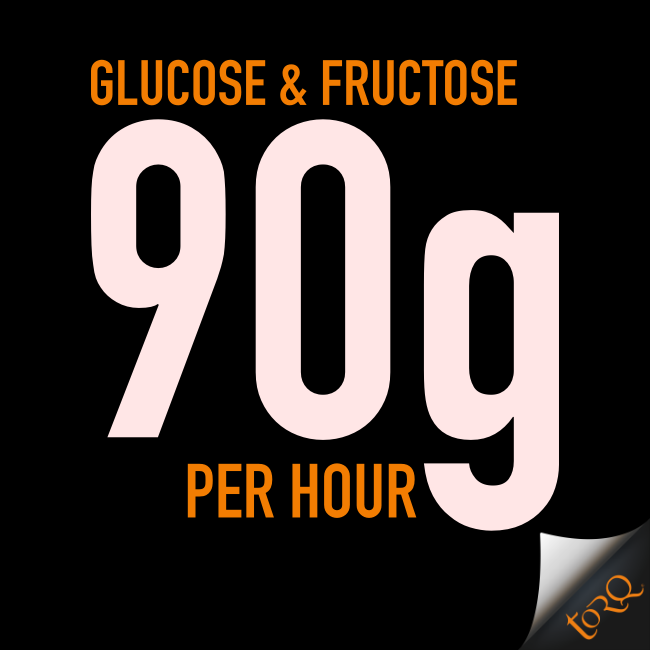
Whilst the performance benefits of combining maltodextrin and fructose at a 2:1 ratio are clear, also note our earlier point – the quicker the contents of the stomach are emptied and the faster the absorption, the less gastrointestinal discomfort there will be. For instance, if you were to consume 60g per hour of maltodextrin only, your glucose transporters will be maxed-out, but 60g of 2:1 Maltodextrin:Fructose would provide the same amount of carbohydrate, but well below the absorption tolerance threshold of both intestinal transporters. The less stress the intestine is under to absorb the carbohydrate, the less stomach discomfort. Imagine consuming 70-80g of maltodextrin only per hour? Obviously you’d experience stomach problems as the SGLT1 transporters struggle to deliver it into the blood (the maltodextrin would back up), but a 2:1 formulation would still be effortlessly absorbed.
Practically Flavourless & Not Sweet
Maltodextrin is flavourless, so flavourless in fact that we commonly refer to maltodextrin as the ‘invisible calorie.’ Whilst it has the density and energy credentials of a simple sugar, it doesn’t have the intense sweetness and this has a few distinct advantages:
a) We can incorporate more carbohydrate into a product without making it overly sweet.
b) When we add fructose (which is intensely sweet) to formulate our 2:1 products, clearly for the functional benefits this brings, the resulting products remain very palatable with the minimum level of sweetness.
c) The lack of sweetness of maltodextrin means that it can be added to savoury recipes to boost the carbohydrate content significantly. Our Organic Energy Powder is 100% organic maltodextrin and is used for this purpose to help with carbohydrate loading leading up to important events and recovery after exercise.
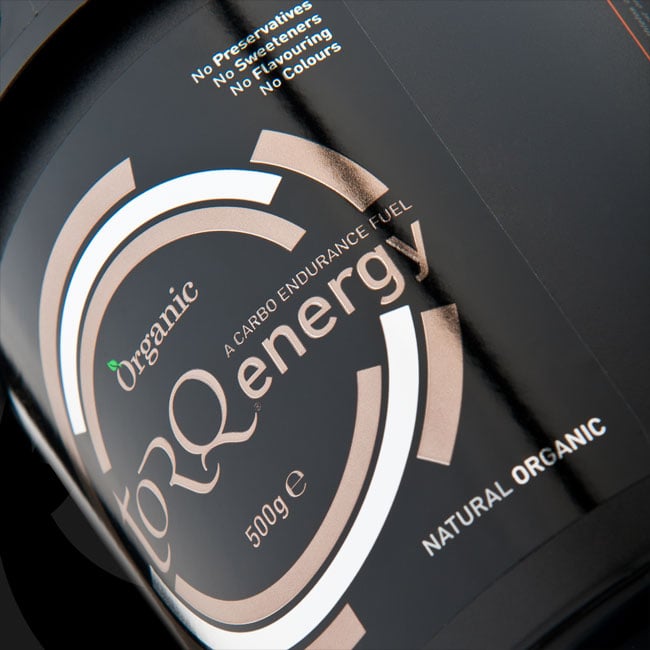
Maltodextrin Myth-Busting!
For reasons unbeknown to us, despite the evidence supporting its performance credentials, there are some who don’t embrace the use of maltodextrin, in fact in some cases they demonise it and suggest that it might actually be ‘bad’ in some way? With this inaccurate and unqualified information circulating, hopefully we’ll be able to set the record straight as we address the myths and fiction typically levelled at maltodextrin. Remember to ask anyone that makes an assertion (positive or negative) about any ingredient or technology to qualify it with scientific evidence, otherwise it’s just opinion – and their opinion clearly needs to be based on something solid and reliable:
“Maltodextrin is slow-release carbohydrate” Maltodextrin is described by some as a slow-release carbohydrate and low GI. As we’ve previously explained, Maltodextrin has a GI of 110, so it is the fastest-release carbohydrate on the planet! This inaccuracy is typically built upon the foundation of maltodextrin having a starch-like molecular structure and thus the assumption is that it must be low in GI, much in the same way wholemeal bread and brown rice is low GI. However, the bonds linking the individual molecules together in maltodextrin are rapidly digested, resulting in an absorption rate identical to that of pure glucose. This has been supported by research from Hawley et al., (1992), Wagenmakers et al., (1993) and Juekendrup (2004) who found that the rate at which glucose from maltodextrin appeared in the blood and was burnt as a fuel was identical to that of pure glucose, a very high GI carbohydrate. As previously mentioned, the GI of maltodextin is further enhanced as a result of its low osmolality.
“Maltodextrin causes gastrointestinal complaints” When it comes to gastrointestinal issues during exercise, there could be a whole host of factors that could be to blame including over-consumption, dehydration and fat ingestion (which often comes hand in hand with poorly designed products). We talk about these variables and the management of gastrointestinal distress in our Don’t Fuel Gastric Discomfort article, so please take the time to give it a read if you’re interested in this subject. There is no evidence that Maltodextrin causes stomach/digestion issues at all, in fact as we’ve previously mentioned in this article, maltodextrin leaves the stomach and is absorbed faster than any other carbohydrate and this contradicts the assertion that it would upset your stomach. Add to this the fact that TORQ Fuelling Products combine maltodextrin or glucose with fructose at a 2:1 ratio (again previously discussed) and any argument that maltodextrin could be responsible for stomach discomfort vanishes.

“Maltodextrin is unhealthy” Firstly, there’s the question of whether carbohydrate or sugars in general are healthy? This will be the subject of an article in the new year, but in short, any sugars or carbohydrate can be unhealthy for certain populations. We produce a product called the TORQ GlucoRx Gel which is available on prescription on the NHS for people with diabetes. We are very well informed on this subject and if you’re interested in the detail, please take the time to read the tabs at the bottom of our Diabetes page. The bottom line is that if you’re sedentary and/or overweight, or pre-diabetic, sugar or carbohydrate can literally be poison. This isn’t just maltodextrin, it’s any form of carbohydrate, however companies want to dress it up, including ingredients like wild honey and brown rice syrup. For physically active people, especially those taking part in endurance sport, carbohydrate isn’t poison, it’s a practical, useful fuel source and whatever’s consumed during exercise is ultimately burned and has no legacy in the human body – it’s gone! Slim, fit and healthy people are also able to process and handle carbohydrate in whatever form effectively and it offers no risk to health other than perhaps dental issues, should you not practice good oral hygiene.
Some criticise maltodextrin by saying that it’s ‘processed’ as if that in itself makes it bad for you. Practically everything we eat is processed, even if we purchase raw ingredients, we put them through a process called a ‘recipe’ and cook them. Chemical reactions take place during the cooking process and they’d probably be quite scary to look at if we listed them all here. You don’t even need to cook things for chemical reactions to take place between ingredients and as soon as we eat a food, more chemical reactions take place hastened by enzymes (biological catalysts) in our digestive system.
Brown rice syrup sounds quite healthy doesn’t it? There’s a process that rice goes through before it becomes brown rice syrup and interestingly, according to Shaw and Sheu (1992) it’s very similar to the processing of maltodextrin. When brown rice syrup is produced, the base ingredient consists of a modified rice starch. This rice starch is considered modified due to the steps required to remove any protein and fat which is naturally found in rice. The modified rice starch then undergoes a number of processes which involves enzymes breaking down the starchy molecular structure of brown rice into more rapidly digestible forms of carbohydrate known as “dextrins”. Finally, the digestible carbohydrate solution is heated until the desired consistency is achieved. Whilst the steps involved to create maltodextrin are very similar to that of brown rice syrup, maltodextrin undergoes one further process to remove the liquid component to create a powder. It’s certainly hard to imagine there’s much ‘brown’ left in brown rice syrup after it has been processed – all of the fibre and protein is removed to produce what’s effectively glucose syrup.
It’s so important to remember that however an ingredient has been processed, when it gets digested by the human body, it simply becomes glucose, which is then used to fuel the cells of the body. There’s a much stronger case to argue from an ‘unhealthiness’ perspective when it comes to organic vs non-organic ingredients. Marketeers might be able to make brown rice syrup sound healthier than maltodextrin using smoke and mirrors, but how about brown rice syrup vs organic maltodextrin? Much of the maltodextrin TORQ use for instance is certified organic by the Soil Association. As organic farming methods must not use chemical pesticides or artificial soil additives, it could easily be justified that organic maltodextrin provides health advantages over non-organic carbohydrate sources such as healthy-sounding brown rice syrup. It’s hard to argue against the purity of organic maltodextrin when the alternative will contain traces of pesticides and other contaminants that are much more harmful than plain old glucose.
Beyond the purity of the product itself, organic certification also requires strict considerations to the supply chain, record keeping, product labelling, product composition, product warehousing and importing and exporting of goods. So, it’s fair to say that we are confident about the quality and composition of the maltodextrin we use at TORQ.

Conclusion
Maltodextrin, grown from botanical sources such as corn can benefit endurance sport fuelling. Maltodextrin’s low osmolality, high GI, high absorption rates, low sweetness and lack of flavour make this nutrient a perfect option for use in highly functioning Performance Nutrition Products. Despite being the highest GI and most rapidly absorbed carbohydrate available, when combined with fructose at a 2:1 ratio, the resulting formulation transforms performance, the sum of the two components being significantly better than the individual parts. A number of myths exist about maltodextrin, propagated by those who don’t fully understand the nutrient, don’t work from an evidence-based philosophy or have a marketing agenda that solely serves their commercial interests. On the subject of health, if there is an argument to be had, evidence and logic would suggest that products containing organic maltodextrin are ‘healthier’ than any other non-organic carbohydrate sources.
Our maltodextrin-containing Fuelling Products can be found HERE.
Our maltodextrin-containing Recovery Products can be found HERE.
Our maltodextrin-containing Explore Range can be found HERE.
Our Organic maltodextrin-containing Energy Powder can be found HERE.
If you have any questions about this article or any other subject, please don’t hesitate in contacting us at enquiries@torqfitness.co.uk or phone 0344 332 0852.
References
Hawley, J.A., Dennis, S.C. and Noakes, T.D., 1992. Oxidation of carbohydrate ingested during prolonged endurance exercise. Sports Medicine, 14(1), pp.27-42.
Wagenmakers, A.J., Brouns, F.R.E.D., Saris, W.H. and Halliday, D.A.V.I.D., 1993. Oxidation rates of orally ingested carbohydrates during prolonged exercise in men. Journal of Applied Physiology, 75(6), pp.2774-2780.
Jeukendrup, A.E., 2004. Carbohydrate intake during exercise and performance. Nutrition, 20(7-8), pp.669-677.
Wallis, G.A., Rowlands, D.S., Shaw, C., Jentjens, R.L. and Jeukendrup, A.E., 2005. Oxidation of combined ingestion of maltodextrins and fructose during exercise. Medicine and Science in Sports and Exercise, 37(3), pp.426-432.
Hofman, D.L., Van Buul, V.J. and Brouns, F.J., 2016. Nutrition, health, and regulatory aspects of digestible maltodextrins. Critical reviews in food science and nutrition, 56(12), pp.2091-2100.
Shaw, J.F. and Sheu, J.R., 1992. Production of high-maltose syrup and high-protein flour from rice by an enzymatic method. Bioscience, biotechnology, and biochemistry, 56(7), pp.1071-1073.






